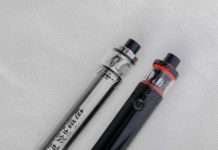- Locked between increasingly-polluted seascape and the borders of one of the most tightly-controlled enclaves in the world, Gaza City residents say the water has become so polluted they can no longer go swimming.
- Situated at the borders of Egypt, Israel, and the Mediterranean Sea, Gaza’s 2 million residents fear that an ongoing electricity crisis has pushed their maritime ecosystem past the brink.
- 80 percent of Gaza’s Mediterranean Sea coastline is thought to be polluted and families who used to rely on it for livelihoods and leisure now fear its waters.
GAZA CITY – Red-faced and with his hair still wet, Hani Abu Amirah’s grandson sobbed as he shuffled over to where she sat, looking out on the Mediterranean Sea from Gaza’s Shati refugee camp.
The boy’s distress stemmed from his decision to go swimming a little earlier that morning, one that incurred his father’s wrath when he was yanked out of the water and beaten for disobeying orders to stay away from the sea. A year ago, that childlike act of enjoyment would have gone unnoticed but today 80 percent of Gaza’s Mediterranean Sea coastline is thought to be polluted and families who used to rely on it for livelihoods and leisure now fear its waters.
“The sea is a part of us, the sea is our life,” said Abu Amirah, 56, who still spends her days sitting by the beach with her grandchildren – even if she struggles to find the same pleasure she once did. “But the pollution affects us now, [the smell of sewage means] we cannot even sit here properly anymore…we banned the children from going down there.”
Through three wars and a decade of blockade by Israel and Egypt, the Mediterranean has given an escape to 2 million Gazans living in the Palestinian enclave lodged between southern Israel, Egypt and the sea. Families would bathe in its waters to escape sticky summer days, then line the seafront with coffee and stove-roasted corn by night.
Many now worry they have lost even that, especially over the past year during which an acute electricity crisis has caused 110 million liters (110, 000 cubic meters) of raw or poorly treated sewage to gush into the sea daily, according to the UN. The newest figures are almost one year old.
From her customary position outside the family home, Abu Amirah waves her hand out toward the brown scum seeping out from Gaza’s coastline that now dominates her view because of the 17 wastewater pipes that empty straight into it from various points along the 25 mile (40 kilometer) shore. The blue waters they have replaced over the past year are now only noticeable as she points to the unpolluted waters further out, sitting on the horizon beyond Gaza’s coast.
Gaza’s problems with water have been a recurring theme since Israel imposed an air, land and sea blockade on the coastal enclave in 2007 to squeeze the government set up by Hamas, a group Israel has been tangled in conflict with since the early 2000s, when it carried out dozens of suicide bombings against Israeli civilians. With nowhere else to turn in a water-scarce region, Gaza has been drawing much of its water from the sea but also expels effluent into the same source. While Israel has met its water needs with desalinated water, building the world’s largest reverse osmosis plant only 30 miles north of Gaza, similar facilities in Gaza lack the electricity to run at full capacity.

Its power problems became critical last March when an internal dispute between Gaza’s ruling leadership, Hamas, and the rival West Bank-based Palestinian Authority (PA) left fuel duties unpaid, forcing the only local power plant’s closure and leaving Gaza with such little electricity that pumps used to funnel sewage to cleansing plants could no longer function. The wastewater instead headed straight to the sea, where pollution levels have reached four times the international standard. It has caused alarm in Israel as well, where beaches close to the enclave have been shut down because of the spreading pollution. The most recent figures are about six months old.
Tightly packed
With 2 million people living in their coastal territory, Gaza’s population is almost as tightly packed as notoriously cramped Hong Kong, putting pressure on everything from the aquifer most draw their water from to the electricity needed to power factories, sewage cleansing facilities and desalination plants.
Though the ongoing electricity crisis has exacerbated those pressures, they have been consistent sources of concern since Hamas took control of Gaza. A 2017 report by the UN predicted the damage done to Gaza’s aquifer, its only water source, will be irreversible by 2018 – sooner than previous estimations.
Much of that population lives in places like the Shati refugee camp, founded to house an influx of Palestinians displaced from nearby villages during the 1948 Arab-Israeli war. At Shati, the industrial pipe spewing into the sea also carries medical waste from Gaza’s main hospital, al-Shifa. Residents said their children have complained of itchiness after going swimming and that even the sand smells strongly of sewage. Their fears deepened after five year-old Mohammad al-Sayis died in July 2017 from a form of shigellosis – a disease spread through fecal matter.
Parasites, including many that affect humans, were found in almost half the samples collected for a 2014 study into the quality of water on Gaza’s coast led by Ahmed Hillis, an expert with the Palestinian Environment Quality Authority.
“It’s a perfect indicator that the shoreline has been polluted by the wastewater,” said Hillis, who believes his study shows there is a strong link between the damage being done to the environment and health risks for Gazans.

According to the World Health Organization, water-related diseases are the main cause of child deaths in Gaza and estimated to account for a quarter of all illnesses.
“This water is a source of pollution and a source of diseases, for the people and also for the environment,” Hillis said. “Visitors to the sea suffer from a lot of illnesses related to the skin because of the direct contact from swimming in this polluted water.”
Fishing
All along Gaza’s coast, there are pipes expelling wastewater from the towns and refugee camps where most of the population are concentrated. That pollution diffuses outwards over the first six nautical miles, according to Mohammed Abu Thaer, a marine biologist in the Hamas government’s agriculture department – the same distance Israel’s navy has limited Gaza’s fishermen to since the blockade, despite the 1990s Oslo Peace Accords signed by Israeli and Palestinian leaders which allowed them to travel up to 20 nautical miles.
Thaer said most of the fish sold in Gaza’s market is safe however, because after the first three miles, most catches are of deepwater fish that live well below the sea’s surface, where the floating film of effluent becomes diluted.

He also claimed his department has tested the fish as safe by taking samples of incoming hauls but much of Gaza’s population still seem worried about eating the fish, crabs and shrimp their cuisine is known for among Palestinians, according to the fishermen themselves anxious about how few people now pass through Gaza’s almost deserted fish market. They have already struggled for years with catches diminished because of the Israeli restrictions on where they can fish. Now they have to contend with local concerns over their stock.
“We try to persuade people but they are still too scared to eat fish because of what they hear, not what they see here,” said Muhammad Mustafa Abu Khair, 32, who insists he fishes in unpolluted waters.
The gloomy wet market’s stock is sparse – small presentations of local sea bream (Sparidae), buckets of crabs (Brachyura) and the odd baby shark (Selachimorph) – but Abu Khair is adamant if customers visited, they would see it is all healthy. The problem is that hardly anyone passes through anymore apart from fishermen who sit in circles on its edges, drinking Arabic coffee from paper cups.
A 2016 study led by Palestinian Environment Quality Authority researcher Hossam Zaqoot found traces of heavy metals like copper and lead were found in the muscles of fish caught near Gaza’s coast, and warned that though they were not yet at levels dangerous to humans, they could be in future if continued rises in pollution further poisoned the fish. The more immediate impact of the pollution, said Abu Thaer, has been in reducing the fish stocks off Gaza’s coast.
“The wastewater consists of a lot of dangerous materials like chlorine, ammonia and soap. This affects the fish itself – their growth is slowed and their stock doesn’t increase,” he said.
Some of the fishermen believe that problem has been made worse by overfishing. The blockade prevents Gaza’s ever-growing population from traveling abroad for work while also hindering its own industry. By September 2017, the unemployment rate had soared to 44 percent as factories closed down because of the electricity crisis.

For many of the jobless, the sea seems an obvious place to search for an income with a boat and some nets. But fisherman Hani Abu Riyal accuses unlicensed fishermen of putting a strain on the industry by crowding out professionals and using fine nets that pick up even the smallest fish.
“What ended the jobs here is the government itself because there are no jobs. Everyone can be a fisherman,” said Abu Riyal, who himself returned to the family tradition of fishing after the blockade meant he could no longer travel to nearby Israeli towns where he had worked as a weaver.
“They fish everything, even the young fish during the breeding season,” he said, noting the weak governance in Gaza, which has been fractured since PA officials boycotted the Hamas leadership after it seized control of the territory in 2007. “In another country, there would be a system to stop this.”
Environmental expert Hillis said Gaza’s water problem is not just limited to the sea; its aquifer, shared with Israel, is also being polluted.

Damaged ecology
Just south of the built-up and congested Gaza City, Bedouin fishermen of Gaza Valley live a much quieter life, preparing their nets in corrugated iron beach huts and digging through the shallows for worms they use as bait. Their isolation is interrupted, however, by the imposing stench from a refuse pipe that reaches hundreds of meters away.
Starting in the West Bank and winding through southern Israel’s Negev desert before it arrives in Gaza, the 65 mile-long (105 kilometer) valley was once a valued ecological site that hosted migratory birds, like flamingos (Phoenicopterus roseus) and Great White Pelicans (Pelecanus onocrotalus), and was declared a nature reserve in 2000 by the PA. But instead of being protected, the previous wetland has become a wasteland used by local municipalities to dump both liquid and solid waste from nearby towns.

A local Bedouin fisherman said their protests against installing wastewater pipes at the site were ignored, but he and the other fishermen all refuse to say anything more.
According to Hillis, Gaza receives only half of the 7.7 billion cubic feet (220 million cubic meters) of rain its aquifer requires a year, even less of which recharges the groundwater, allowing salt water to intrude. It also means there’s space for leachate, a liquid produced by dissolving waste in landfill sites, and cesspools used to store sewage to seep through Gaza’s porous sedimentary rock in places like the Gaza Valley.
Dealing with it
Concern about pollution and the wider electricity crisis has spread to the Israeli sphere, not only because of the physical impact made by intruding pollution but also as Israeli politicians and the military worry that deteriorating conditions increase the chance of another conflict. They accuse Hamas of causing the crisis by allegedly spending money on building its military capacity rather instead of the population.
“Israel has an interest in positive dynamics in Gaza, but one cannot demand from the State of Israel to use its state budget for infrastructure that is harmed because of an internal Palestinian conflict, while Hamas invests money in terrorism,” Israeli military chief Gadi Eisenkot told the Israeli parliament, the Knesset, in July 2017.

Israel did agree in late January however to begin supplying electricity to a sewage cleansing plant in northern Gaza. The move followed recommendations made in a state review that criticized the military for refusing to provide a power line to the plant when it was built in 2013.
For Hillis, Gaza’s environmental challenges cannot be separated from the blockade, which increases the overpopulated enclave’s dependence on whatever resources are available to it. He highlights that more than 3,000 items needed to develop Gaza’s water and sanitation sector await Israeli approval to enter the strip because of restrictions on “dual-use items”, which Israel claims could also be used to build weapons to be used against it.
“Life in Gaza has become more and more complicated by these issues and we need quick solutions for our problems and the environment is the most important,” said Hillis. “All of the international community is responsible.”
Banner image: Palestinian bedouin in Gaza Valley dig for worms in the polluted shallow waters on Gaza’s coast to use for fishing. Photo by Kaamil Ahmed/Mongabay.
Kaamil Ahmed is a foreign correspondent who has reported on conflicts, labor and the environment in South Asia and the Middle East. You can find him on Twitter at @kaamilahmed.
FEEDBACK: Use this form to send a message to the author of this post. If you want to post a public comment, you can do that at the bottom of the page.
This story first appeared on Mongabay
South Africa Today – Environment
This article is licensed under a Creative Commons Attribution-NoDerivatives 4.0 International License.
You may republish this article, so long as you credit the authors and Mongabay, and do not change the text. Please include a link back to the original article.












